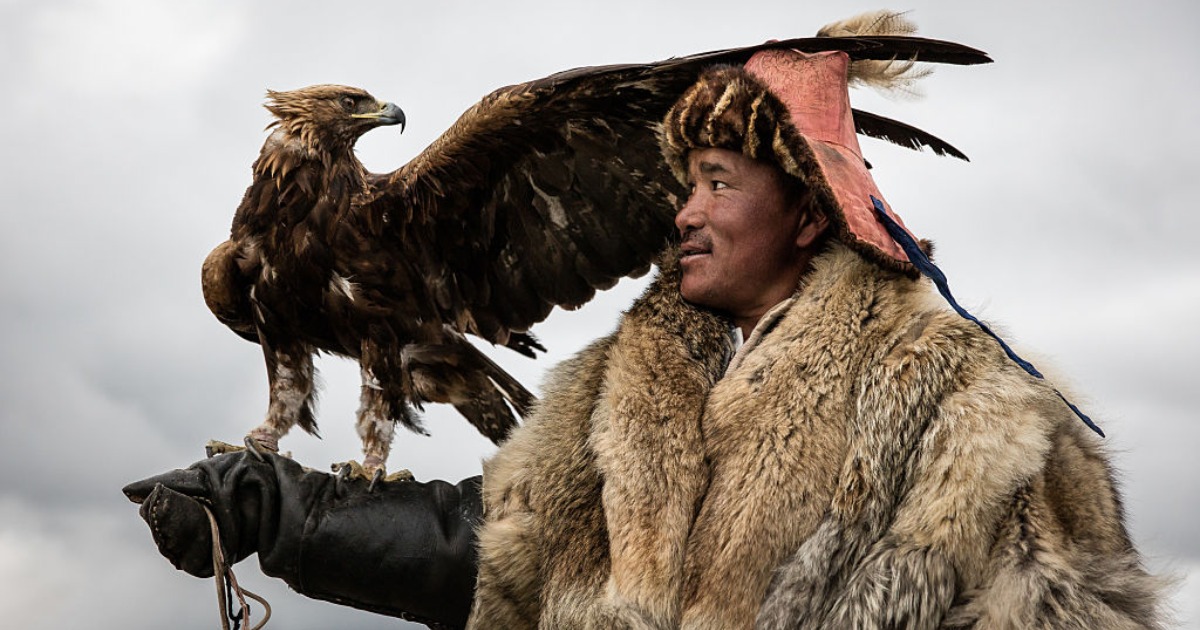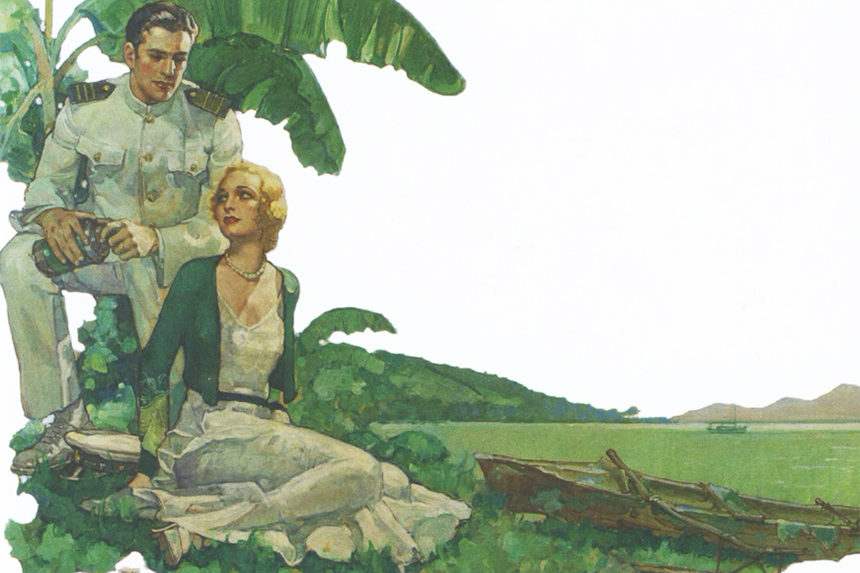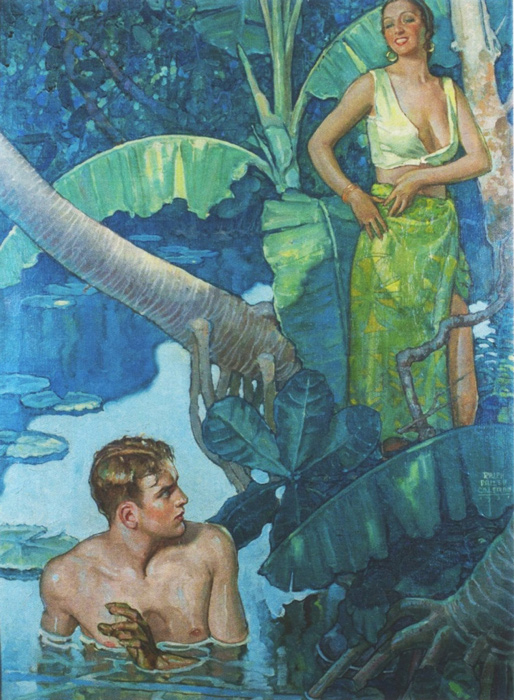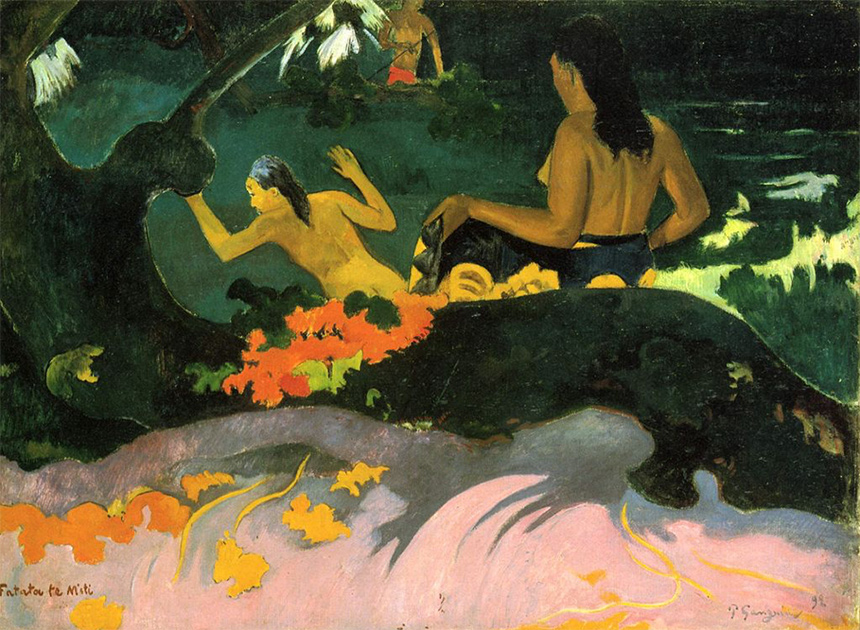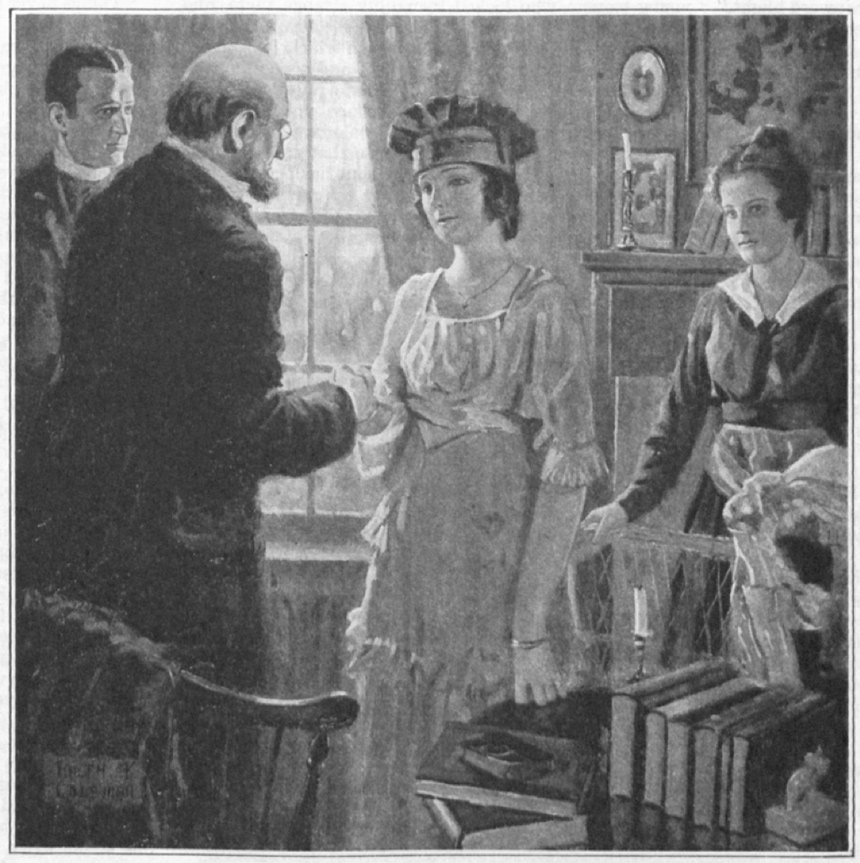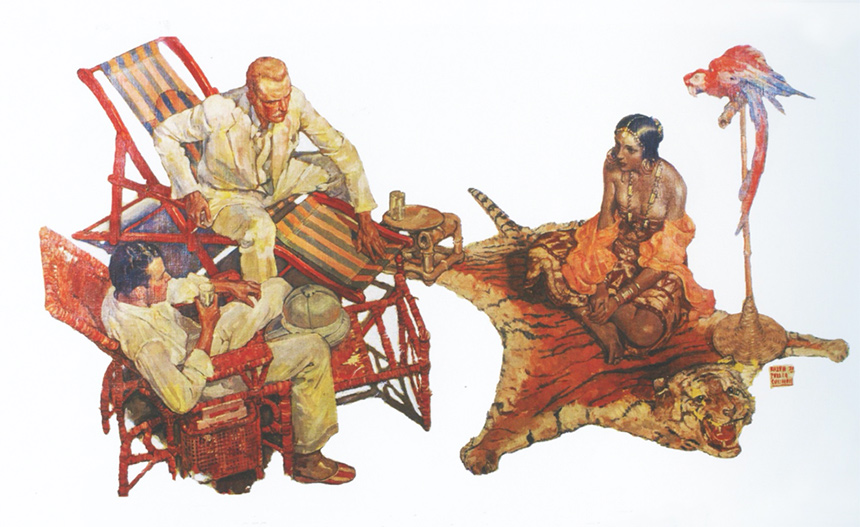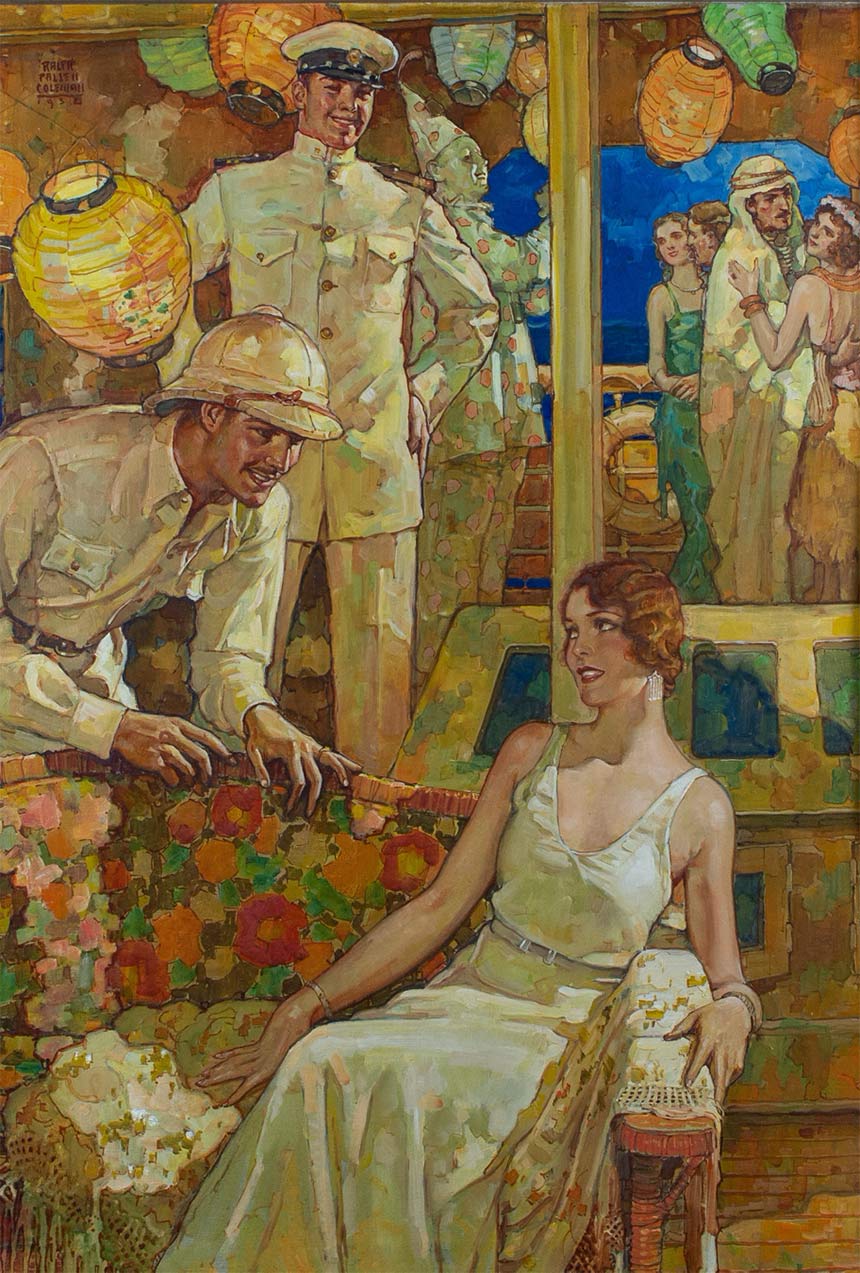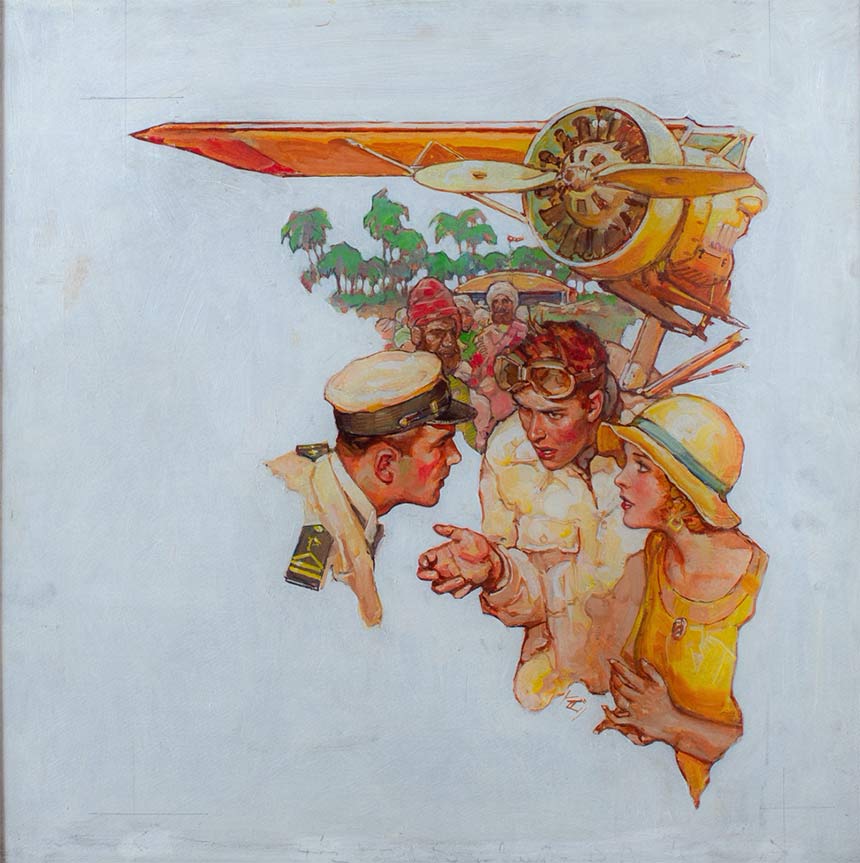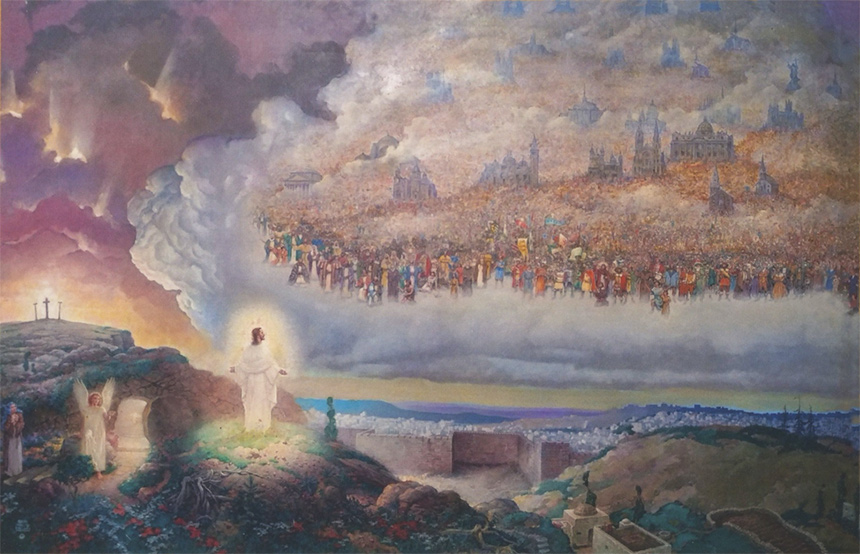In honour of the date, here’s something a bit less serious – if no less central to the history of the district.
Most communities have their own stories of strange or frightening apparitions and events. When examined more closely they have all kinds of roots: perhaps a distorted echo of some real (if not supernatural) event, or a tale told in order to get people to avoid a dangerous spot (and to discourage trespassing), or simply a fireside story handed down within a community. Although some are comparatively modern, others are very old indeed and might be repeated in different areas with slightly varying local details.
All Hallow’s Eve was, of course, a time specially reserved for stories like this. In Wales, the night of the 31st October was particularly associated with the ladi wen (“white lady”), an apparition usually connected with a particular spot: there are still, in some places, fields and lanes named after a ladi wen once said to be seen there. By the 19th century she had become part of the long and honourable tradition of stories told to frighten children into behaving properly. More frightening still was the hwch ddu gwta, the “dock-tailed black sow” supposed to spring from the embers of the bonfire that people would, well into the 19th century, light on All Hallows’ Eve, and carry off the last person to reach the safety of home. In North Wales there was a rhyme that spoke of the black sow lurking in the darkness on every stile (“ar ben pob camfa“) on that night. In Welsh as in other folklore, stiles, gates and crossroads were places where you might expect to run into a spirit, and more superstitious people would hurry past them as darkness fell.
Another old Welsh tradition was the premonitory vision: Brymbo has a good example of its own (bo or bw is, after all, a word translated in some old dictionaries as a “terror” or demon, perhaps – just – giving another possible source for the placename). In September 1602, the chronicler Robert Parry wrote (in the Plas Nantgwyn MS. 1, folio 28) of a strange “apparition” seen in the vicinity of Nant y Ffrith:
About this tyme was seene about Nant y ffrith between Trethyn and Wrexham in the edge of the eveninge to the nomber of 2 or 3 thousande men armed men a hors backe with banners displayed marchinge in warlike manner where as indeed there was no such thinge but some apparition or forewarninge of liklyhoode. And yet that was verified by 8 or ix.en persons some of them of credyte that all ioyntly saw the same.
At the time, this was interpreted as perhaps a “forewarninge”, a premonition of conflict rather than a rerun of the past. But despite this, our later knowledge of the area’s history has caused the presentation of the story to change. It is now asserted in some books that the ghosts of a “Roman army” were seen marching through the valley where a Roman trackway used to run, although Parry said nothing about the men being Romans, or even on foot for that matter.
In a way, it’s rather surprising that there aren’t more of these tales relating to the Civil War, given how active its armies were in east Denbighshire. Colonel John Robinson was reputed to haunt his old residence at Gwersyllt Ucha – a tale perhaps reflecting the last, handed-down memories of a man once locally celebrated – but that’s not, strictly speaking, a Brymbo story. More locally, Alfred Palmer noted that the Powells of the Gyfynys were still remembered almost two hundred years after the family had been of any importance, but there was nothing supernatural about this.
Brymbo’s few ghostly tales are more a matter of old dwellings rather than old personalities. Glascoed Hall, once the house of the philanthropic Maurice Jones, was reputed to have a ghost of some kind. Brymbo Hall had several different stories attached to it, or rather a single story which mutated over the years. The one recorded by Palmer relates to Jane Wynn, the grand-daughter of Robert Griffith, the last of the old family of landowners, who in Palmer’s time was still spoken of as roaming the premises, a century and more later. It was a suicide story, though Palmer does not mention this directly; however as he does point out, Jane not only lived to an advanced age but did not even end her days at Brymbo, as she sold the house to John Wilkinson, who on balance would seem a lot more like the sort of character you’d imagine haunting it. The story may, just, overlay an earlier incident, but perhaps Mrs Wynn was particularly eccentric, or sufficiently generous (or, alternatively, unpleasant) to the locals to be remembered, or perhaps her surname caused her to get confused with old tales of the ladi wen. .
By the middle of the 20th century, when the house was abandoned and empty, the tale seemed to have changed. The ghost of Brymbo was now, depending on who you asked, stated as either being that of a maidservant who committed suicide there, or of a daughter of a former owner who took her own life on her wedding night rather than marry. Neither was mentioned by Palmer and the latter in particular has the ring of adapted folk balladry about it: none of the previous occupants seem to have had such an incident in their family. This version of the story was recorded in an article by D. Owen in a 1967 issue of the magazine Country Quest; well worth seeking out as it has a photograph of the building I have not seen in other collections. Owen writes that dogs would refuse to enter a particular attic room and doors and windows were said to open of their own accord (the latter is not very surprising in such a windy spot). Owen also records that the driveway leading to the house (which, in later years, ended more or less on the road where the Brymbo substation is today) was known as the ‘Ghost Road’, and that two men standing by its gate one night felt “invisible hands pulling at their coats”.
Another of the stories that Palmer recorded in passing was his description of the Lodge, or “Hill’s Land” as it was once known, as a place where fairies (the tylwyth teg, literally the “fair tribe”, in Wales) were once reputed to dance. The fairies of Welsh tradition were a malicious lot, and people generally gave the areas they were supposed to inhabit a wide berth. Unfortunately Palmer does not say where he learned of this local tradition, or give any other details of it. It may just be a coincidence that the hill above Lodge was known as Bryn Teg (“fair hill”).
It may be that there are a large number of other, more modern, folk-tales about; though they form an intimate part of an area’s social history they are rarely recorded by ‘conventional’ sources. It’s always worth recording them, if you hear one.






